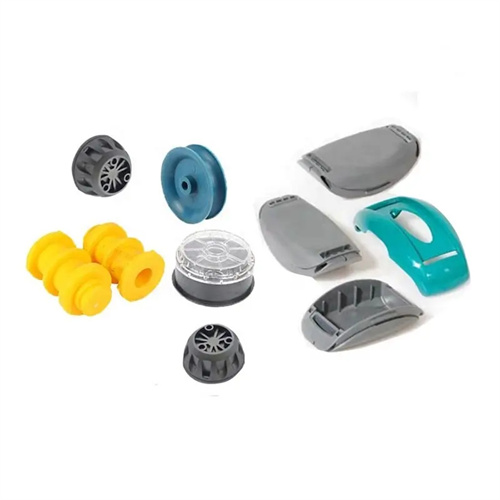Injection molding spray pattern (snake pattern)
Injection molding spray marks, also known as serpentine marks, are common surface defects in injection molding. They appear as irregular ripples or twisting marks formed when the melt flows in the mold cavity, seriously affecting the appearance quality and mechanical properties of the product. The core reason for its formation is that the melt flows too fast when entering the cavity, causing the front melt to solidify due to a sudden drop in temperature. The subsequent melt is forced to flow over the surface of the solidified layer, forming folds or stacks. For example, when polypropylene melt is injected into a mold with a lower temperature at a speed exceeding the recommended flow rate, the melt that first contacts the cavity wall cools rapidly, while the high-temperature melt in the center remains fluid. The speed difference between the two causes the solidified layer to be “pushed” to form ripples, resulting in a serpentine-like pattern on the surface of the product.

Irrational mold design, particularly improper gate size and location, is a significant factor in causing jetting. If the gate diameter is too small, the melt’s velocity increases dramatically as it flows through it, concentrating its kinetic energy and leading to jetting. If the gate is positioned directly opposite a large surface area in the mold cavity or away from the end of the melt flow, the melt will have difficulty evenly distributing itself, leading to turbulent flow. For example, in the injection molding of flat-plate products, if the gate is located at the midpoint of the long side and its diameter is only 1/5 of the product thickness, the injected melt will impact the opposing cavity wall like a “water gun jet,” rebounding and interfering with subsequent melt flow, resulting in a distinct serpentine pattern. Furthermore, poor mold venting can compress the air within the cavity, generating backpressure fluctuations that further exacerbate melt flow instability and contribute to the formation of jetting.

Material properties also significantly influence the formation of jetting marks, with melt viscosity and flowability being key parameters. Low-viscosity materials (such as polyethylene) are more prone to jetting under the same process conditions because they offer low flow resistance and are more difficult to control. High-viscosity materials (such as polycarbonate), while having poor flowability, can experience localized degradation of the melt front due to shear overheating when forced into the mold under high pressure, resulting in irregular flow marks. For example, when the injection temperature of ABS resin is low, the melt viscosity increases. At this point, increasing the injection pressure to force mold filling can cause the melt front to “break and reform” due to excessive shear stress, leaving intermittent serpentine marks on the surface of the part. Furthermore, insufficient amounts of additives (such as plasticizers and lubricants) in the material can increase friction between the melt and the cavity walls, hindering flow and indirectly inducing jetting marks.

Optimizing process parameters is the key to addressing jetting, with controlling injection speed and temperature being particularly crucial. Using a “staged injection” technique—initially injecting a small amount of melt at a lower speed to fill the area near the gate, then increasing the speed once a stable flow front is formed—can effectively avoid jetting. For example, when molding polyoxymethylene products, setting the injection speed to 20 mm/s in the first stage and increasing it to 50 mm/s after filling 10% of the cavity volume can significantly reduce serpentine marks. Furthermore, increasing the mold temperature (for example, from 50°C to 80°C) can slow melt cooling, prolong the solidification time of the flow front, and facilitate even melt spreading. Appropriately increasing the barrel temperature (for example, from 200°C to 220°C for polypropylene) can reduce melt viscosity, improve fluidity, and reduce flow resistance.

Existing jet marks can be remedied through post-processing and mold improvements. Minor jet marks can be treated with flame treatment or plasma surface treatment, which uses high temperature or high-energy particles to eliminate surface lines and enhance the surface tension of the product, facilitating subsequent painting and beautification. If the defect recurs, the mold needs to be modified: enlarge the gate diameter to reduce the flow rate, add a diverter channel to evenly distribute the melt, or add a buffer cavity near the gate to slow down and stabilize the melt before entering the cavity. For example, when producing plastic gears, enlarging the original 1mm diameter needle gate to 2mm and adding a 0.5mm deep buffer groove between the gate and the cavity can effectively eliminate serpentine marks on the tooth surface and improve the product qualification rate.
